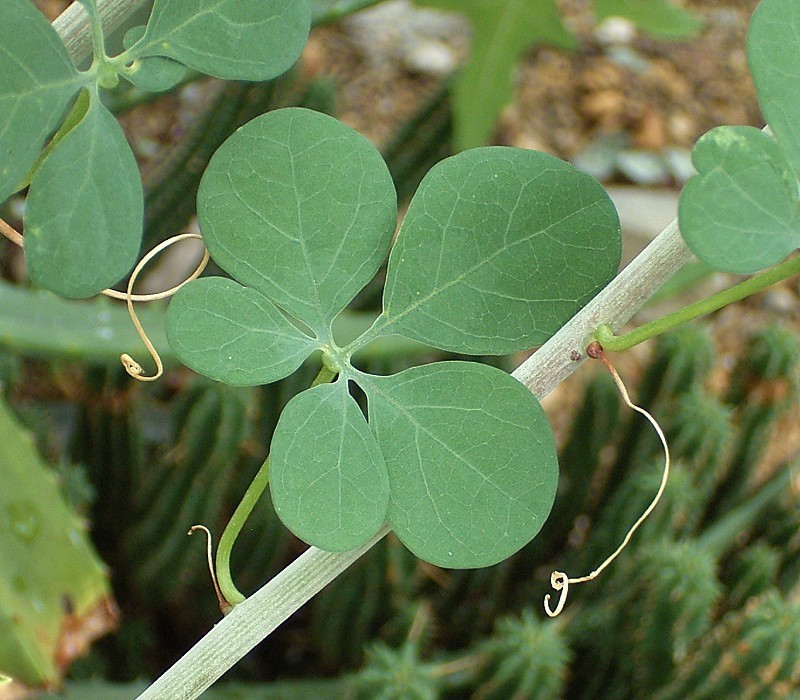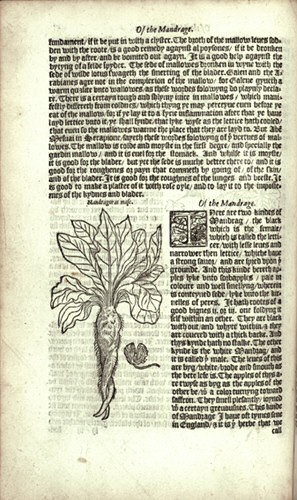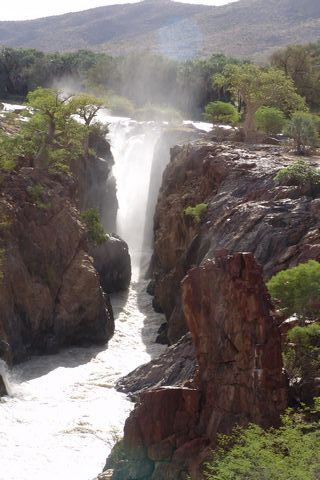|
Turnera Oculata
''Turnera oculata'' is a species of evergreen, woody shrub, bearing striking yellow flowers with a dark centre, and occurring in the Kaokoveld in the Namib Desert in northern Namibia and in southern Angola. It is one of some 130 species occurring mainly in South America, but with two species found in Africa - one in Namibia and Angola, and the other in tropical Africa. Description This species is up to 2.5 m tall with a woody stem some 30 mm thick at the base, and with short side branches. The plant has a dense covering of grey-green velvety hairs which may be stellate or simple. Its leaves are leathery and alternate, obovate, some 50 mm long and 25 mm broad with 5–7 pairs of shallow teeth along the margins. Veins on the lower surface are conspicuous. Mature leaves have two whitish oval glands on opposite sides of the leaf base. These glands have orange-coloured rims, and produce nectar (extrafloral nectary). Flowers are solitary with their pedicels distinctive ... [...More Info...] [...Related Items...] OR: [Wikipedia] [Google] [Baidu] |
Kaokoveld
The Kaokoveld Desert is a coastal desert of northern Namibia and southern Angola. Setting The Kaokoveld Desert occupies a coastal strip covering , from 13° to 21°S and is bounded by the Atlantic Ocean to the west, the Namibian savanna woodlands to the east, and the Namib Desert to the south. It includes the Moçâmedes Desert of southern Angola. The Kaokoveld is a harsh desert of drifting sandunes and rocky mountains. It receives most of its rainfall during the summer, which distinguishes it from the adjacent Namib Desert to the south, which receives most of its rain during the winter. The Kunene River is the only permanent watercourse but many dry riverbeds (including the Hoanib, Hoarusib and Khumib Rivers) carry moisture through the desert and are home to animals including elephants, black rhinos, and giraffe. Other than those the area is ancient desert sand, moistened by occasional coastal fog. Flora The Kaokoveld is home to ''Welwitschia mirabilis'', a plant that has n ... [...More Info...] [...Related Items...] OR: [Wikipedia] [Google] [Baidu] |
Namib Desert
The Namib ( ; pt, Namibe) is a coastal desert in Southern Africa. The name is of Khoekhoegowab origin and means "vast place". According to the broadest definition, the Namib stretches for more than along the Atlantic coasts of Angola, Namibia, and South Africa, extending southward from the Carunjamba River in Angola, through Namibia and to the Olifants River (Western Cape), Olifants River in Western Cape, South Africa. The Namib's northernmost portion, which extends from the Angola-Namibia border, is known as Moçâmedes Desert, while its southern portion approaches the neighboring Kalahari Desert. From the Atlantic coast eastward, the Namib gradually ascends in elevation, reaching up to inland to the foot of the Great Escarpment, Southern Africa, Great Escarpment. Annual precipitation ranges from in the most arid regions to at the escarpment, making the Namib the only true desert in southern Africa. Having endured Desert climate, arid or Semi-arid climate, semi-arid cond ... [...More Info...] [...Related Items...] OR: [Wikipedia] [Google] [Baidu] |
Extrafloral Nectary
Nectar is a sugar-rich liquid produced by plants in glands called nectaries or nectarines, either within the flowers with which it attracts pollination, pollinating animals, or by extrafloral nectaries, which provide a nutrient source to animal Mutualism (biology), mutualists, which in turn provide plant defense against herbivory#Indirect defenses, herbivore protection. Common nectar-consuming pollinators include mosquitoes, hoverfly, hoverflies, wasps, bees, butterfly, butterflies and moths, hummingbirds, honeyeaters and Bat#Fruit and nectar, bats. Nectar plays a crucial role in the foraging economics and evolution of nectar-eating species; for example, nectar foraging behavior is largely responsible for the divergent evolution of the African honey bee, African bee, ''A. m. scutellata'' and the western honey bee. Nectar is an economically important substance as it is the sugar source for honey. It is also useful in agriculture and horticulture because the adult stages of so ... [...More Info...] [...Related Items...] OR: [Wikipedia] [Google] [Baidu] |
Adenia
''Adenia'' is a genus of flowering plants in the passionflower family, Passifloraceae. It is distributed in the Old World tropics and subtropics.''Adenia''. Flora of China. The centers of diversity are in , eastern and western tropical , and . The genus name ''Adenia'' comes from "aden", ... [...More Info...] [...Related Items...] OR: [Wikipedia] [Google] [Baidu] |
Acraea Brainei
''Acraea brainei'', the Braine's acraea, is a butterfly in the family Nymphalidae. It is found in north-western Namibia. Biology The habitat consists of granite outcrops on hills and ridges. Both sexes feed from the flowers of ''Turnera oculata''. They are on wing from February to April. The larvae also feed on ''Turnera oculata ''Turnera oculata'' is a species of evergreen, woody shrub, bearing striking yellow flowers with a dark centre, and occurring in the Kaokoveld in the Namib Desert in northern Namibia and in southern Angola. It is one of some 130 species occurrin ...''. Taxonomy It is a member of the '' Acraea terpsicore'' species group - but see also Pierre & Bernaud, 2014 Pierre & Bernau, 2014 Classification et Liste Synonymique des Taxons du Genre ''Acraea'pdf/ref> References Butterflies described in 1986 brainei Endemic fauna of Namibia Butterflies of Africa {{Heliconiinae-stub ... [...More Info...] [...Related Items...] OR: [Wikipedia] [Google] [Baidu] |
Turnera
''Turnera'' is a genus of flowering plants in the passionflower family, Passifloraceae. It contains more than 100 species native to tropical and subtropical America. The name honours English naturalist William Turner (1508–1568). It was previously placed in the family Turneraceae. Species The following species are currently recognized: A * '' Turnera acangatinga Costa-Lima & E.C.O.Chagas'' * '' Turnera acaulis1Griseb.'' * '' Turnera acuta2 Willd.'' * '' Turnera amapaensis R.S.Cowan'' * '' Turnera amazonica1?Arbo'' * '' Turnera angelicae Arbo'' * '' Turnera annectens2 Arbo'' * '' Turnera arcuata2 Urb.'' * '' Turnera arenaria (Spruce ex Urb.) Arbo'' * '' Turnera argentea2 Arbo'' * '' Turnera aromatica2Arbo'' * '' Turnera asymmetrica2Arbo'' * '' Turnera aurantiaca2 Benth.'' * '' Turnera aurelioi1 Arbo'' B * '' Turnera bahiensis Urb.'' ** var. ''bahiensis2'' ** var. ''truncata2 Arbo.'' * '' Turnera benthamiana2 M.R.Schomb.'' * '' Turnera blanchetiana Urb.'' ** var. ''blan ... [...More Info...] [...Related Items...] OR: [Wikipedia] [Google] [Baidu] |
William Turner (naturalist)
William Turner (1509/10 – 13 July 1568) was an English divine and reformer, a physician and a natural historian. He has been called "The father of English botany."Samson, Alexander. ''Locus Amoenus: Gardens and Horticulture in the Renaissance'', 2012 :4 He studied medicine in Italy, and was a friend of the great Swiss naturalist, Conrad Gessner. He was an early herbalist and ornithologist, and it is in these fields that the most interest lies today. He is known as being one of the first "parson-naturalists" in England. He first published '' Libellus de Re herbaria'' in Latin in 1538, and later translated it into English because he believed herbalists were not sharing their knowledge. Turner's works were condemned under Henry VIII and under Mary Tudor. Biography Early years Turner was born in Morpeth, Northumberland, in or around 1508. His father was probably a tanner of the same name. He studied at Pembroke Hall, Cambridge University, from 1526 to 1533, where he recei ... [...More Info...] [...Related Items...] OR: [Wikipedia] [Google] [Baidu] |
Robert Story (botanist)
Robert (Bob) Story (19 August 1913 Fort Beaufort – 20 February 1999 Australia) was a South African botanist and ecologist. His father, who died in 1925, was a farm manager who had studied at Edinburgh University and obtained a Diploma in Agriculture. After spending 1926-30 at Grey High School in Port Elizabeth, Robert Story attended Rhodes University from 1931-33 where he obtained a B.Sc., after which he enrolled at Witwatersrand University from 1934-35 where he graduated with an M.Sc. and was later awarded a D.Sc. His first appointment was to the Leeuwkuil Pasture Research Station near Vereeniging in 1936. During World War II he saw service in Madagascar, North Africa and Italy. At the close of the War in 1945 he was transferred to the Botanical Survey Section of the Division of Botany and stationed at Grahamstown. Here he carried out a botanical survey of the Keiskammahoek District and it was published as 'Botanical Survey of South Africa Memoir No. 27' in 1952. In the ... [...More Info...] [...Related Items...] OR: [Wikipedia] [Google] [Baidu] |
Kunene River
The Cunene (Portuguese spelling) or Kunene (common Namibian spelling) is a river in Southern Africa. It flows from the Angola highlands south to the border with Namibia. It then flows west along the border until it reaches the Atlantic Ocean. It is one of the few perennial rivers in the region. It is about long, with a drainage basin in area. Its mean annual discharge is 174 m3/s (6,145 cfs) at its mouth. The Epupa Falls lie on the river. Olushandja Dam dams a tributary of the river, the Etaka, and helps provide the Ruacana Power Station with water. Dam controversies The Namibian government proposed in the late 1990s to build the Epupa Dam, a controversial hydroelectric dam on the Cunene. In 2012 the Governments of Namibia and Angola announced plans to jointly build the Orokawe dam in the Baynes Mountains. According to the indigenous Himba who would have been most affected by the construction of the dam, the dam threatens the local ecosystem and therefore the economic bas ... [...More Info...] [...Related Items...] OR: [Wikipedia] [Google] [Baidu] |



